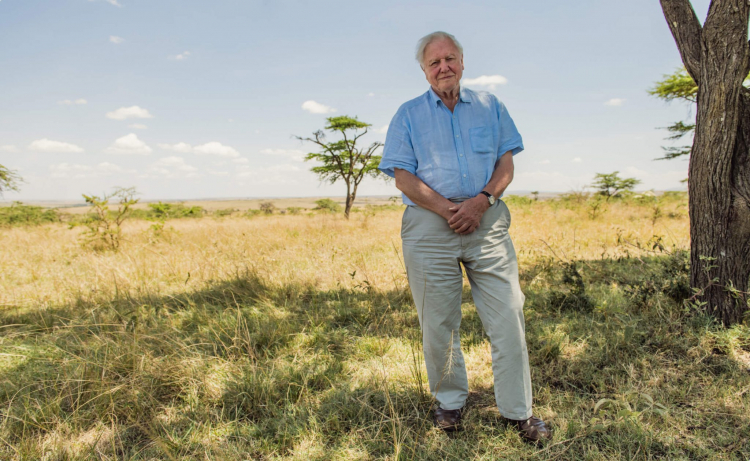A Life on Our Planet

In between binges of Bly Manor and other scary series, Netflix has added something surprisingly unseasonal for your Halloween-time viewing pleasure: A Life on Our Planet, hosted by David Attenborough. A classic, authoritative British accent gently guides viewers from the depths of the ocean to the treetops of the Amazon to the ice plains of the Arctic. Currently, Attenborough is 94 years old, and is able to speak with such clarity and poise that we would otherwise forget his impressive age, were it not the spine of the timeline that this film progresses on. This 83 minute long documentary is essentially a follow up to his popular 1979 show, Life on Earth.
Attenborough begins with Chernobyl and the excitement mounts from there. Speaking about the amount of Earth that was covered with the wild when he was born, he goes chronologically forward in time from there. This documentary contains clear divisions in between time periods, allowing viewers to either watch all in one go or separate the decades as they wish. A Life On Our Planet is not focused solely on showing how humanity has decimated the planet but also on the incredible beauty and resilience of our wild Earth. It would seem to be a sad program perhaps, showing how humans have negatively impacted our home, but it is the truth, and it is undoubtedly more important than ever to understand humanity’s impact on Earth. Beyond the facts and the present, Attenborough also examines the future, and offers solutions such as renewable energy and eating less meat to change the course of our fate.
According to the promotional website for the film, the premise of A Life On Our Planet is "One man has seen more of the natural world than any other. This unique feature documentary is his witness statement."
It seems as if everyone, from The New York Times to The Guardian, received the film with awe and appreciation. A large portion of the movie is depressing, but it is true, and our hero David Attenborough swoops in with a solution about an hour into the program to explain how we can change our behavior and the effects of unsustainable consumerism for the better; ways to right our wrongs, if you will. Overall, there is a heavy emphasis on sustainability, and it praises animals for “living lives in such a way that they interlock and sustain each other.” This program is filled with stunning shots of animals and plants, places you have maybe not even heard of, and, of course, shots of destruction caused by humans. I personally could not turn it off, and believe that this documentary should be required viewing for all. There are shots from Attenborough’s original show as well as new footage; a particularly poignant moment is seeing him interact with multiple giant, gentle silverback gorillas in the wild. The history of our planet as seen from an ecological perspective was absolutely fascinating to me, and how our activities as humans on a daily, monthly, and yearly basis shape the world around us is a good reminder of just how large our impact is and can be. By walking us through what has happened in the past, we can better understand the present, and better prepare for our future. We must not forget where we came from and where we live is the exact same place, and that no matter how much we move away from our wild roots, it still exists all around us.







